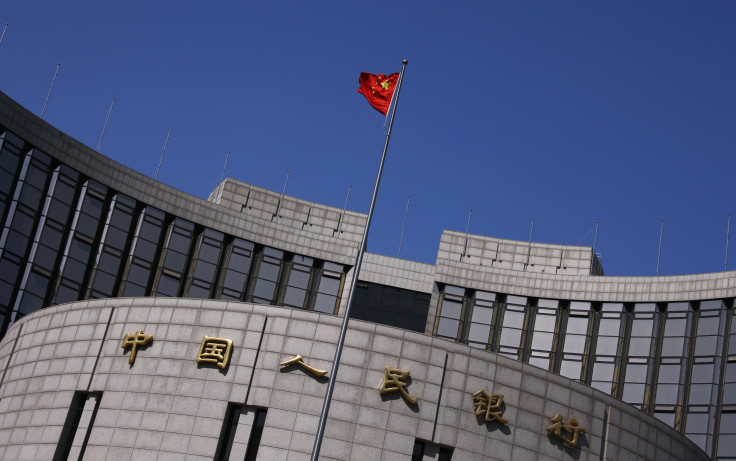China Cuts Rates For Fifth Time Since November, Injects Fresh Stimulus After Another Stock Market Rout

The People’s Bank of China Tuesday lowered its one-year lending rate by 25 basis points to 4.6 percent effective August 26, responding to market turbulence in the country. The central bank also lowered the reserve requirement ratio (RRR) -- which governs how much money banks can lend -- by 0.5 percent, according to media reports.
This is the fifth time China has lowered interest rates since November. Earlier on Tuesday, China’s stock market rout continued with the main Shanghai Composite Index falling 7.7 percent, following the previous day’s fall of almost 8.5 percent. Over the past few months, concerns have grown about a worsening slowdown in the world's second-largest economy.
“The main purpose is to continue to play a good role in guiding the benchmark interest rate, reducing the social cost of financing to promote and support the sustainable and healthy development of the real economy,” the PBOC said, in a statement released Tuesday.
The new lending rate will be effective Wednesday. The one-year deposit rate will also fall by 25 basis points to 1.75 percent. The RRR cut will be effective Sept. 2.
Li-Gang Liu, chief economist for Greater China at ANZ Banking Corp. in Hong Kong, told International Business Times earlier on Tuesday: “From the macro-economic point of view a cut in the reserve requirement ratio is needed, to reduce the high funding and borrowing costs for Chinese firms.”
Earlier this month, faced with slumping exports, the central bank made an unprecedented move to devalue the yuan by 4 percent over two consecutive days, triggering panic in global markets.
European stock markets, which had opened higher after Monday’s dismal trading session, continued to climb after the central bank’s announcement. The pan-European FTSEurofirst 300 index was trading 4.4 percent higher, while London’s FTSE 100 was up 3.4 percent. S&P futures rose about 4 percent after the move.
© Copyright IBTimes 2024. All rights reserved.





















